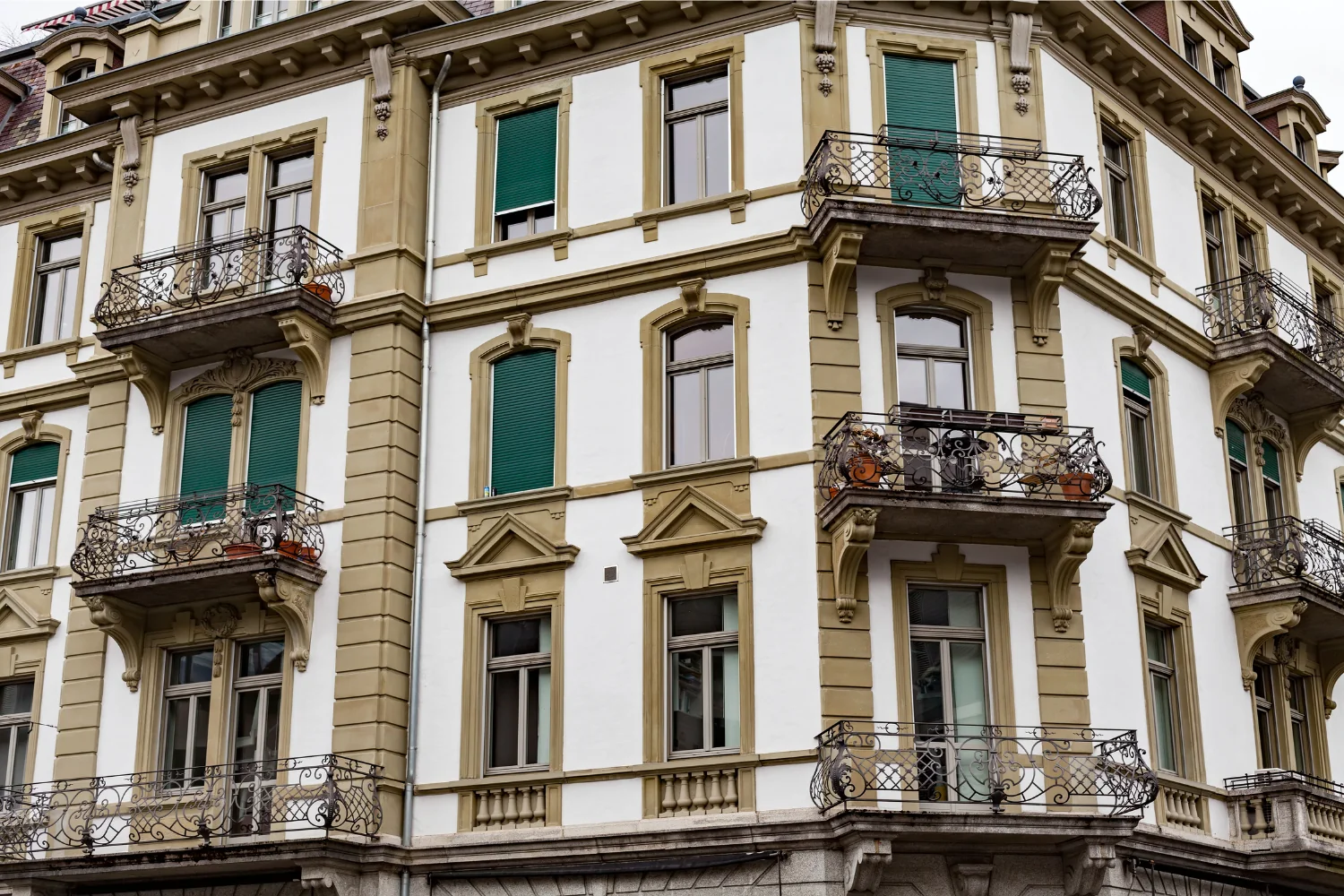
Flats in old buildings are a dream for many people, with their incomparable charm, unique atmosphere and spacious rooms with high ceilings. However, when the heating season arrives, they can cause a loss of comfort for their residents and become expensive. The reason for this often lies in the old, leaky windows and the rooms, which are often cool in the transitional period and in winter. Many old flats lack sufficient insulation, which leads to considerable heat loss through leaky window frames and cold walls, thus driving up energy costs. However, it is not only comfort that suffers from this inadequate insulation; the risk of mould growth also increases when moisture condenses on the cool walls. Efficient heating is therefore not only important for personal comfort, but also for the preservation of the building fabric and fixtures and fittings. In the cold winter months, the room temperature in old flats should therefore be at least 18 degrees Celsius.
Flats in old buildings are often characterised by high ceilings of around 3 metres. Conventional convection heaters take a long time to warm up these rooms and do not react quickly to temperature changes. The warm air rises with these heaters, which leads to uneven heat distribution from floor to ceiling, especially in high rooms. On the one hand, this means that it takes a while to reach the desired comfort temperature and, on the other, the floor often remains very cold. Many people then tend to switch the heating on and off frequently, which is counterproductive and increases energy consumption.
Infrared heaters are a sensible addition to existing heating systems in old flats. They are easy to install, immediately ready for use and provide additional, cosy warmth. When heating is no longer required, they can simply be switched off via the thermostat and consume no energy. The great advantage of using infrared heat is that it heats objects directly, resulting in more even heat distribution from floor to ceiling. Each object acts as a heat reservoir and radiates heat itself.
Infrared hybrid heaters combine the advantages of modern infrared heaters with those of traditional convection heaters. The pleasant radiant heat acts on the objects in the room and thus contributes to a more even room temperature. Certain models also combine the storage of heat, which leads to a lasting effect and more economical operation. By combining different types of heat transfer, it is possible to heat rooms more efficiently and sustainably.
It can be a sensible strategy in old buildings, Infrared heatersas well as infrared hybrid heating systems as a supplementary heating solution. In such a scenario, the basic heating requirement can be covered by another heating system, such as a gas heating system. Infrared heaters can then be used to increase the room temperature or to selectively heat individual areas. These heaters consume less electricity and therefore help to reduce operating costs.
Conclusion
In old flats, infrared heaters and infrared hybrid heaters provide efficient, comfortable and cost-effective heating during the heating season as the main or auxiliary heating system.